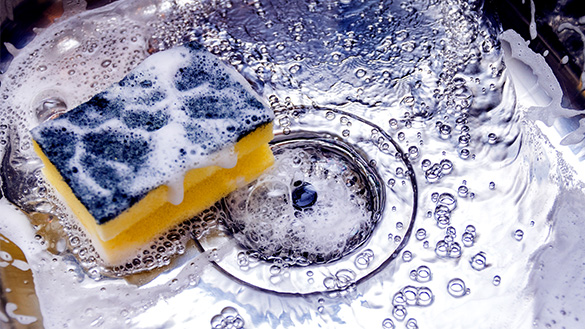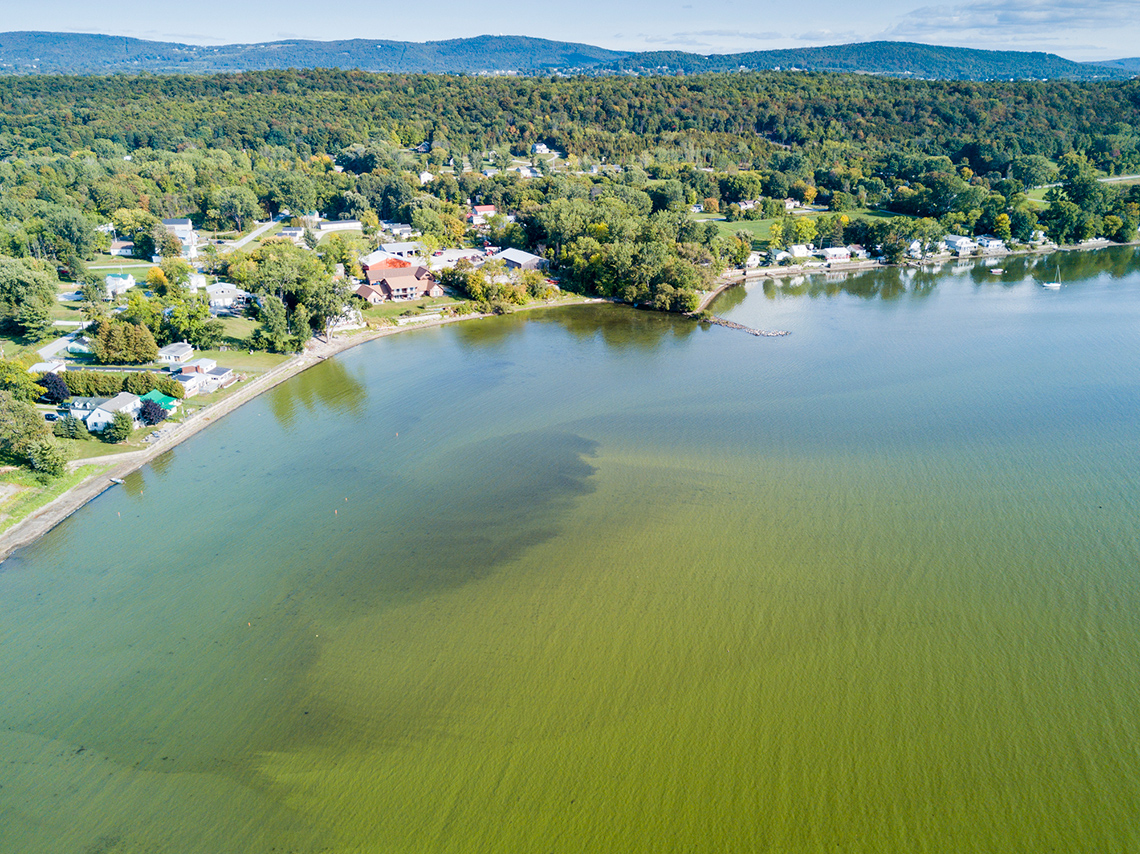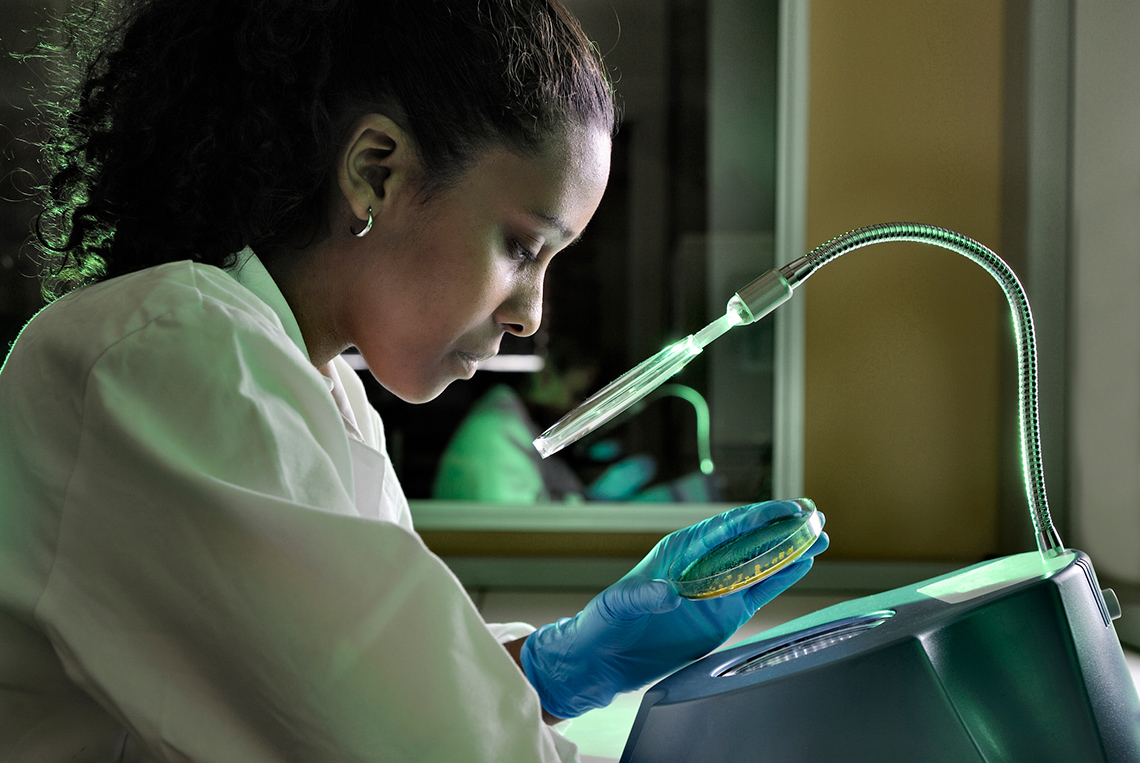Minds On
Algae
Brainstorm the following questions. Use the images as inspiration.
- Where does algae come from?
- Where might you see algae?
- Why do you think algae might be harmful to its surrounding environment?
Action
Ontario connection
This learning activity highlights people, places, or innovations that relate directly to the province of Ontario. Enjoy the exploration!

Task 1: Blooms in Lake Erie
What are algae blooms?
Analyze the following infographic about algae blooms. In the organizer provided or in another method of your choice, record some of the causes of algae blooms and effects of algae bloom.
DescriptionCauses and Effects of Harmful Algae Blooms
Algae is always present in surface water. However, under the right conditions, Harmful Algae Blooms (HABs) can develop. Excess run-off caused by rainfall over rural, urban, and natural environments can wash nutrients such as phosphorus, nitrogen, and potassium (from fertilizers from both lawn and large crop production) into bodies of water. Farmer waste containing animal feces, shore bird droppings, and raw untreated sewage can also carry these nutrients. The nutrients, along with warm temperatures and sunlight, can cause the algae to grow large and dense along the shallow shorelines. Some HABs, such as cyanobacteria, can release toxins such as microcystin that can enter public drinking water systems as well as kill other natural marine life.
Hypoxia, or Dead Zones, are areas of low oxygen near the bottom of bodies of water caused by excessive nutrient pollution from human activities. The bottom dwelling aquatic life are extinguished by toxins from HABs and lack of sunlight, thus, creating a cyclical kill-off effect by depriving other life in the system of nourishment.
Cyanobacteria or often called, blue-green algae, is a naturally occurring bacteria that can produce microcystin which can be toxic to both people and animals when ingested from the source or through public drinking water systems.
Complete the Causes and Effects of Algae Blooms Chart in your notebook or using the following fillable and printable document. If you would like, you can use speech-to-text or audio recording tools to record your thoughts.
| Causes of Algae Blooms | Effects of Algae Blooms |
|---|---|
Press the ‘Activity’ button to access Causes and Effects of Algae Blooms Chart.
Press ‘Answer’ to access the causes and effects of algae blooms.
| Causes of Algae Blooms | Effects of Algae Blooms |
|---|---|
|
|
Blooms in Lake Erie
 Description
Description
A map of Lake Erie. Lake Erie borders Ontario along its northern shore from Windsor to St. Catherine's. In the United States, its southern shore runs along Toledo, Cleveland, Erie, and Buffalo. Point Pelee, Pelee Island, and Middle Island are indicated in the south-west end of Lake Eerie.
How are algae blooms impacting the water quality of Lake Erie? To answer that question, you need to look at the nutrients! A nutrient is a substance that supplies nourishment essential for growth and the maintenance of life. Aquatic ecosystems require specific nutrients to thrive, such as: carbon, nitrogen, phosphorus, and silicon.
Access this video entitled “What Causes Algae Blooms” to learn more about algae blooms and where they come from.
Select the correct True or False answer, then press ‘Check Answer’ to see how you did.
How it works
Explore the following series of images and video. These are meant to demonstrate how fertilizers and detergents that runoff into Lake Erie, combined with heat and sun, cause algae blooms to grow.
As you explore, record in a method of your choice how algae blooms form.
First, detergents, or other products containing nutrients are disposed of through faucets, drains, or on the ground.
For example, excess detergent might be run down the drain, or detergent runs off onto the ground while someone washes their car.


Then, when it rains, excess water runs into sewer systems and into major water ways. This water picks up any detergents and fertilizers from the ground and carries it into the water.
Finally the weather gets warmer, the sun beats on lakes that now contain various nutrients from detergents and fertilizers. As the lake warms, algae begin to grow. The warmer the lake gets; the faster and thicker algae will grow. Algae absorbs the sunlight, which makes the water even warmer and promotes more algae blooms.

- Are too many nutrients bad or good for a lake? Why?
- What do you think would happen if there were no nutrients at all?
Fertilizers and detergents are nutrients that runoff into Lake Erie, and when combined with sun and heat form algae blooms. You will begin the experiment today and will need to monitor it over the next few weeks.
Before beginning your experiment, explore this video that explains the Scientific Experimentation Process. This will help guide you as you work your way through this activity.
Check out this video to learn about the steps of the Scientific Experimentation Process.
Safety
Before you explore the following experiment, let’s perform a safety check.
Hands-on Science
Hands-on science
Press the following tabs to access the materials needed and experimental procedure for the Algae Bloom experiment.
- Plant fertilizer and/ or fish food
- Glass jar or fishbowl (or something similar)
- Water plants (if possible, not necessary)
- Set up water plants in the fishbowl or jars, if possible and add water.
- Add an excessive (a lot) of fertilizer or fish food to the water. Note: If you have plant fertilizer and fish food, set up two jars or bowls, one with fertilizer and one with fish food.
- Place the bowl in a sunny spot (indoors), ideally in direct sunlight. If you have more than one bowl or jar, put the second one in a direct heat source if possible.
Take some time to record your hypothesis before continuing.
- After one week, investigate your bowls/jars and observe and record any changes that have occurred. Add more fertilizer and/or fish food if possible.
- Over the next two weeks, monitor your bowls/jars, observe, and record any changes. Is it greenish? Is there scummy skin on the water?
Complete the Algae Bloom Lab Sheet in your notebook or using the following fillable and printable document. If you would like, you can use speech-to-text or audio recording tools to record your thoughts.
| Materials needed | |
| Hypothesis – what do you think will happen? | |
| Procedure | |
| Observations
*Remember observations can be recorded with pictures, numbers and/or words! |
|
| Conclusions | |
Questions
|
Press the ‘Activity’ button to access Algae Bloom Lab Sheet.

Science is about reflecting and reimagining. Was your experiment successful?
Is there anything that you would change about your experiment design to improve it or the outcome?
Even if your experiment was not successful, what did you learn or confirm about the topic you were investigating?
Task 2: How can we help?
Now that you have a better understanding how algae blooms are forming in Lake Erie and the impacts, it is important to consider how we can help!
Based on what you know already, brainstorm ideas of how you can reduce algae bloom formation in Lake Erie (or any lake really) in a method of your choice.
Press ‘Sample Answer’ to access some ways algae bloom formation can be reduced.
So, what can be done? We can:
- reduce runoff
- select soaps and detergents with less phosphates
- minimize the use of fertilizers
- re-route runoff, so it doesn’t directly go into street drains and gutters and therefore into the lakes
Who is helping? Check out this career profile!
Connections
Career: Biotechnologist

As a biotechnologist you'll study the chemical, genetic and physical attributes of cells, tissues and organisms in order to generate new technologies, processes and products that will undertake some of the most impactful problems facing society, such as algae blooms. More specifically, an environmental biotechnologist is responsible for detecting and controlling pollution and contamination in the environment, industrial waste, and agricultural chemicals, producing renewable energy and designing materials that are biodegradable in order to reduce humanity's ecological footprint.
Day-to-day duties include:
- create, conduct, and monitor experiments using live organisms in a laboratory setting to solve problems, improve processes and develop new products
- perform data analysis on your experiments and interpret findings to support scientific investigations
- set up, maintain and use standard laboratory equipment and computers
- collaborating with other scientists and working independently
- work to health, safety and environmental regulations and meet quality standards
- keep up to date with new advances in biotechnology to develop new techniques, products or practices.
Consolidation
Safety guidelines

Create a guideline or safety plan for how to dispose of a household item that might contaminate a lake with nutrients (phosphorus) and would contribute to the formation of algae blooms to share with your school or community. You could create:
- a poster
- a social media post
- a presentation
- step-by-step instructions
You should include:
You should consider:
Reflection
As you read the following descriptions, select the one that best describes your current understanding of the learning in this activity. Press the corresponding button once you have made your choice.
I feel…
Now, expand on your ideas by recording your thoughts using a voice recorder, speech-to-text, or writing tool.
When you review your notes on this learning activity later, reflect on whether you would select a different description based on your further review of the material in this learning activity.
Press ‘Discover More’ to extend your skills.
Discover MoreTo learn more about Algae Blooms in Lake Erie, explore this article “Why Ontario is struggling to fight Lake Erie’s toxic green goo” by Mary Baxter.
Press tvo today to access Why Ontario is struggling to fight Lake Erie’s toxic green goo.
TVO dot org (Opens in a new tab)


